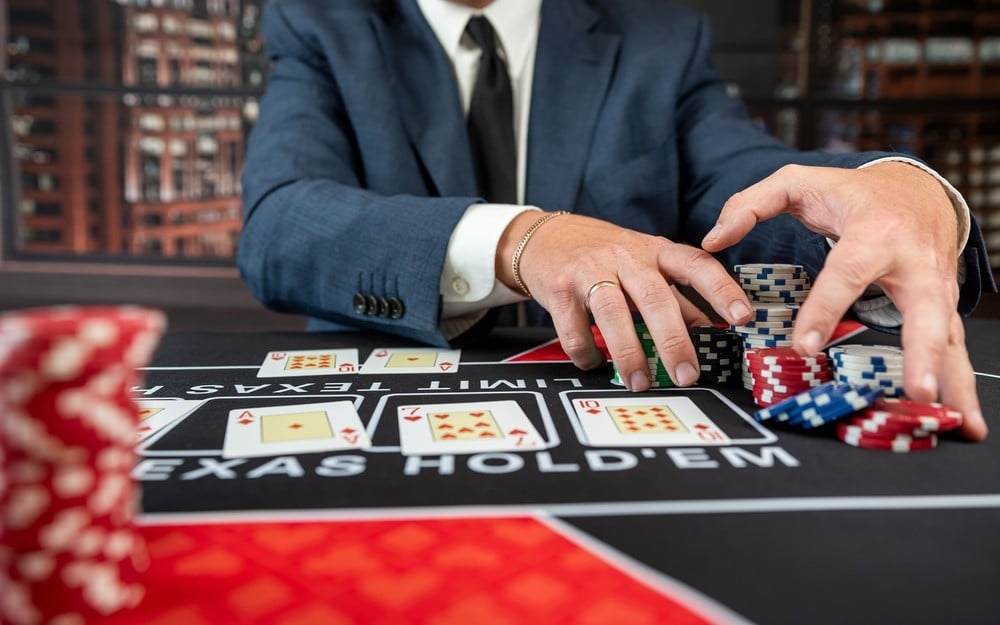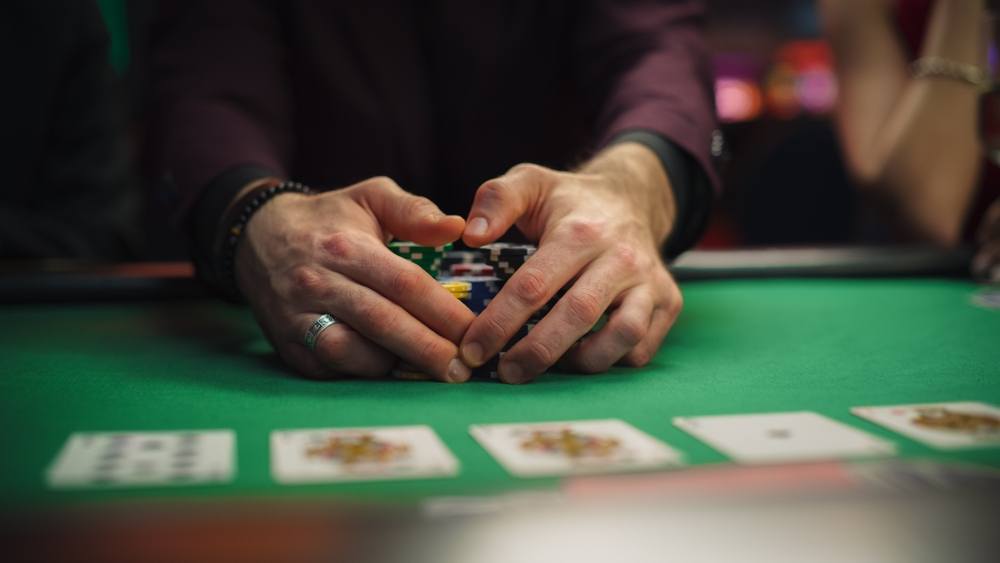What Are VPIP and PFR in Poker?

Summarize this post
PFR Poker: What You Need to Know
- Dive into advanced Pre-Flop Raise (PFR) strategies to elevate your poker game and gain a competitive edge at the casino table.
- Explore insights from poker statistics and analysis to understand the impact of PFR poker on hand ranges, aggression levels, and overall gameplay dynamics.
- Learn how to adjust your PFR poker range based on position, stack sizes, opponent tendencies, and table dynamics for strategic advantage.
- Implement sophisticated PFR tactics, such as 3-betting and balancing ranges, to exploit opponents and maximize profitability.
- Master the art of PFR poker by combining technical expertise with psychological insights to outplay opponents and achieve consistent success in your games.
Every possible edge in Texas Hold ‘Em can lead to better outcomes and, let’s face it, the fewer opponents you have the better odds you have of winning. One of the advanced strategies in Texas Hold ‘Em is known as the Pre-Flop Raise (PFR).
What is PFR in Poker?
PFR stands for “Pre-Flop Raise” in poker. It is a statistical measure indicating the percentage of hands in which a particular player makes a raise before the flop.
Keeping track of PFR allows players to understand the gameplay tendencies of their opponents: a high PFR could indicate an aggressive player who raises often, whereas a low PFR might suggest a more passive player. This information can be used to adjust gameplay strategy accordingly.
If you’re learning how to play poker and want to consider PFR, this article should prove the basic details to get you started and what to look out for.
When Do You Use PFR in Poker?
There are many reasons why PFR can be an important strategy and impacts gameplay in a variety of ways:
- Strong Hole Cards: The community cards can go any number of ways but if you’re holding two strong cards, you can raise before the flop to indicate and scare away potential opponents and/or build the pot.
- Minimize competition: If another player folds, that’s one less person who could potentially find favorable cards in the flop, turn or river. We’ve all been in the position where we fold bad cards only to discover they could have turned into a winning hand.
- Make Them Pay for the Flop: If you have a good hand, don’t let the others see the flop for cheap. Your Pre-Flop Raise indicates your hand is strong and you deserve to play into the next round.
- Collecting Intelligence: If a player folds, they thought their hand was weak. However, if they call or raise, you now have information that they could be holding a strong hand as well.
- Psychological Warfare: If you PFR aggressively, you’re signaling to the others players that you’re not afraid to play and apply some pressure.
What Does the Pre-Flop Raise Percentage Mean?
To determine the PFR percentage, take the number of hands in which a player raises pre-flop versus the number of hands played. If a player raises 15 times out of 100 hands played, the percentage is 15%.
This is used to assess a player’s style and how aggressive or conservative they are and what strategy you can use against it.
Generally, a PFR percentage above 15% indicates they are more aggressive.

Image credit: RomanR/Shutterstock
What is VPIP in Poker?
Voluntary Put money In Pot, or VPIP, is a percentage of how often a player bets, calls or raises. This doesn’t include blinds because those bets aren’t voluntary. An example would be if out of 100 hands played, if you voluntarily put money in 50 times, the VPIP would be 50%.
What is the Difference Between VPIP/PFR in Poker?
The way in which VPIP and PFR are related is in regards to poker strategy and how players bet at the beginning of a hand. While VPIP can happen at any time, PFR obviously can only occur before the flop. However, whether you’re the player raising pre-flop or it’s someone else, it is a key indicator on someone’s betting style.
A player willing to raise pre-flop or has a high Volunteer Put money in Pot percentage plays more aggressively. They are willing to gamble more often, re-raise when prompted and pressure their opponents into calling.
On the opposite side of the spectrum is the player with a lower VPIP and someone more likely to call rather than bet. They tend to play hands more conservatively, which means they’ll play when they have a higher likelihood of winning and less likely to bluff.
Raising pre-flop and monitoring the VPIP of other players can provide you with information about opponents’ hands and force them to call, raise or fold in times they would otherwise make a different decision.
Is PFR higher than VPIP? Generally, no. Players are more likely to put money in voluntarily as the game progresses rather than pre-flop.
PFR Values in Different Poker Formats
Depending on the poker format, there are different values that PFR may have.
- PFR in Six-Max Games are tight-knit with only six players vying for the pot (as opposed to a 9-10 player format). Because this is a smaller game, the players tend to be aggressive. There is a tendency for more action and the game moves quicker. Players have a PFR percentage closer to 20-30% with the more conservative players still raising pre-flop around 15% of the time.
- PFR in Full Ring Games are played with more traditional PFR percentages because there are 9-10 players. Unlike in the six-man games, the aggressive players in full ring games have a PFR percentage closer to 15%. The more conservative players will raise pre-flop only about 5-8% of the time.
- PFR in Zoom Poker Games is fast-moving, as the name suggests, which means players who want to stay in will PFR aggressively. In a game in which if you fold, you get moved to a new table, there is a greater incentive to stick around and learn your opponents’ strategies. The most aggressive players can have a PFR percentage close to 30%. The likelihood of moving frequently means you have to change your strategy all the time.

Image credit: RomanR/Shutterstock
Exploiting Opponents Using Poker PFR
If you can identify different player types with PFR while playing Texas Hold ‘Em, you’ll be better prepared to challenge your opponents and have an edge with your hand.
What Are The 4 Types of PFR Players?
Although these percentages will vary depending on whether you’re playing a Six-Man Game, Full-Ring Game or Zoom Game, the types of PFR player remains the same. For context, the below percentages are based on a Full-Ring Game.
- Aggressive Players play just like that: aggressively. They will have a PFR range between 12-20%, so it’s likely they will raise pre-flop in 1 out of 5 games. An aggressive players’ strategy puts pressure on the others and often forces them to either fold (reducing the number of opponents) or call (which raises the poker equity). Aggressive players tend to play when they have a perceived strong hand.
- Tight-Aggressive Players tend to PFR selectively. Most of the time they’ll do it because they have a strong hand. They’ll occasionally bluff and hope to make a hand in the community cards, or force the others to fold. Tight-aggressive players have a PFR between 8-12%.
- Tight-Passive Players will typically raise pre-flop if they have a good hand so they have a lower PFR percentage at around 5-8%.
- Loose Players are similar to aggressive players in that they have a high PFR percentage. The difference is that a loose player’s strategy is about playing more hands and being somewhat unpredictable. Loose players will PFR even if they don’t have a great hand and have a high PFR percentage range of 15-20%, sometimes more.
So, how do you combat these varying PFR players? You can adjust the way you play by reading other players at the table to throw them off-balance. If a player is aggressive and calling or raising, get more selective in when you call or raise and ignore the pressure to raise or call.
If the players are more passive, consider raising with more frequency. This applies pressure on your opponents to call or raise, which increases the pot size, or will make them fold so you can take more blinds.
What is a Good VPIP and PFR in Poker?
A good VPIP and PFR can be dependent on how a player chooses to play poker.
- High VPIP and Low PFR: This type of player tends to call rather than raise unless they have a big hand. They likely won’t bluff and will play the cards, not their opponent.
- Low VPIP and Low PFR: This type of player only plays big if they have a big hand. They don’t mind folding and rarely play big.
- Medium VPIP and Low PFR: A medium VPIP means putting money in about a quarter of the time. They’re more likely a casual player who calls a lot of raises and won’t bet big unless they have a good hand. When they bet, assume they have a decent hand.
- Medium VPIP and Medium PFR: This is the ideal strategy. If you’re not used to playing this way, ease yourself into it. It’s not easy playing a possible junk hand to outwit your opponents.
Common PFR Poker Mistakes to Avoid
- Over-raising. With a high PFR percentage, you’re opening yourself to other aggressive players who might have better hands once the community cards are dealt. It’s okay to be aggressive, but consider your PFR percentage.
- Raising to see the cards. If you Pre-Flop Raise or call to see the flop cards, you might be delaying the inevitable. There’s no point in losing chips just to see how things play out in the flop.
- Failure to adjust. Poker is all about reading the other players. If you notice you’re at a table with aggressive players, failing to adjust is setting yourself up to make mistakes.
- Playing based on potential. If you overvalue your hand and PFR on the possibilities, you’re playing with hope and not strategy. Learning the difference between exploitative play and GTO play is important in maintaining balance in your game.

Image credit: Kitreel/Shutterstock
How Do You Build a PFR Poker Strategy?
- There are many reasons why PFR can be an important strategy and impacts gameplay in a variety of ways. It can help increase the pot, make others fold or be an aggressive move with strong hold cards, to name a few.
- Consider both PFR and VPIP, which is the percentage a player voluntarily puts money in the pot. Both provide insight into a player’s strategy.
- Depending on the poker format, a player may change their strategy.
- There are generally four types of PFR players: Aggressive, Tight Aggressive, Tight Passive and Loose players.
There are many guides that can help players continue their poker education and no shortage of articles like this one that provide insights into overlooked strategies and information to take to the poker table.
One of the best ways to learn is to jump into it. If you’re a regular at a casino, live dealer poker or online poker game, start paying more attention to PFR and VPIP and consider how to take advantage of the players and their preferred methods of play.


